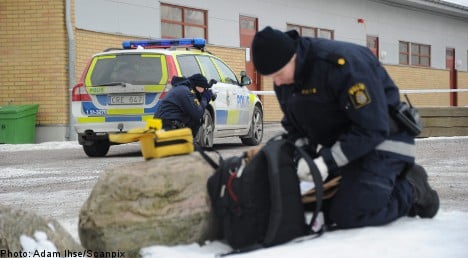”We have sent a demand that he be held provisionally while we get the paperwork sent over,” said prosecutor Per-Håkan Larsson to news agency TT.
Larsson told TT that the man is being held by police somewhere abroad, but he wouldn’t divulge in what country.
The attack, which occurred outside the Bergsgård school in the Hjällbo district northwest of central Gothenburg, left the young girl seriously wounded.
An unknown man approached the girl while she was playing in the school yard, stabbing her in the throat and then fleeing the scene.
She was immediately taken to Östra Hospital with the knife still in her throat, according to a statement from police, and was later moved to Sahlgrenska Hospital.
According to the prosecutor the apprehended suspect does not have a criminal record but was known to the police, which means that although having previously been suspected of crimes, he has never been convicted.
Larsson thinks it won’t take more than a few weeks before the man can be extradited to Sweden, unless he appeals the extradition which would mean the process would take longer.
”Hopefully it is a question of a short time, a few weeks or at most a month,” said Per-Håkan Larsson to TT.
Larsson added that the police in the country where the man is being held have been very helpful and are cooperating well with their Swedish colleagues.
He was not willing to elaborate on how the police went about tracking the man, but said that there are no other leads and that they think they have found the right man.
”There are no other alternatives. Hopefully this is the right way forward, and that is the way it looks at the moment,” Larsson said to TT.



 Please whitelist us to continue reading.
Please whitelist us to continue reading.
Member comments